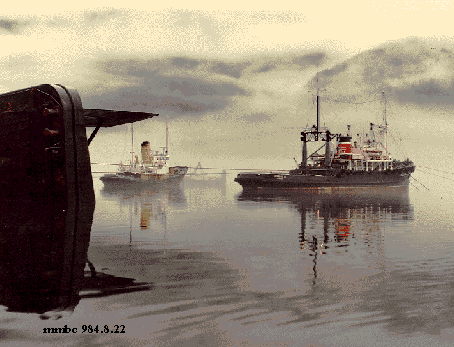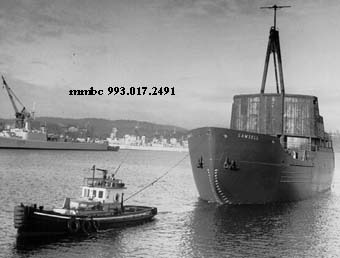
Tugboats in the morning mist
mmbc 984.8.22

 The tug 'Island Trooper' escorting the Canadian Coast Guard icebreaker Camsell mmbc 993.017.2491 |
Tugboats serve many industries including lumber, fishing, mining and agriculture, transporting raw materials, fuel and machinery. They also transport people, for example the engineers who layout industrial plants and the employees who operate them. The vessels transport finished products to market; act as support vessels for naval ships; and rescue distressed vessels or salvage them. From the British Columbian coast to the province's lakes and rivers, tugboats have played a critical role in the success o f our diverse industries. |

![[English]](../simages/english.gif)
|

![[French]](../simages/french.gif)
|

![[Credits]](../simages/credit.gif)
|

![[Feedback]](../simages/feedback.gif)
|